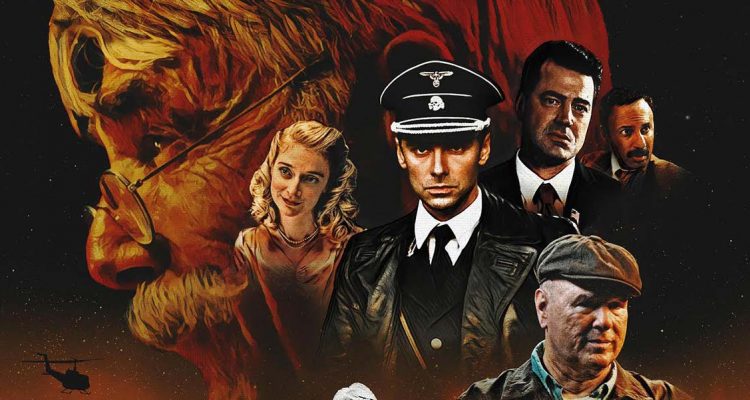If you’re brassy enough to name and make a film called “The Man Who Killed Hitler And Then Bigfoot,” you better deliver on that promise. Sadly, and surprisingly given the title’s absurdist genre connotations, director Robert D. Krzykowski‘s film of the same name, is a more meditative, slow-moving affair, as legendary character actor Sam Elliott plays the titular hero that carries out both missions to assassinate two of history’s most legendary evils (well, maybe Bigfoot is just misunderstood?). Shouldn’t this be some kind of delirious exploitative B-movie that doesn’t take itself at all seriously? One would think, but the film’s director has a completley different idea in mind.
A rather slow and uneventful start tries to establish a serene, almost zen-like character. Elliott stars as Calvin, a golden-age war veteran, now retired, who wants to be left alone. The first hour or so of “The Man Who Killed Hitler And Then Bigfoot” sets up his lonely lifestyle, filled with strolls around the neighborhood, and plenty of flashbacks to show the trauma he endured back in WWII.
Flashbacks rewind the viewer to a younger Calvin during his stint as a rebel soldier in Nazi-occupied France. Krzykowski does not show us the agony of war, as much as Calvin’s romance with a young woman (Caitlin FitzGerald). A prepared proposal at a restaurant goes sour, and sooner than you know it, Calvin is sent off on a mission to impersonate an SS officer and kill the Führer.
Rather maudlin and sappy in nature, the romance itself is a glossed-over picturesque portrait of love during wartime. Far more successful are the sequences where Calvin goes undercover at the Third Reich headquarters as he inspects each room to find his target. Krzykowski tries to build momentum with the WWII sequences, which he occasionally pulls off, but these fleeting moments of eye-catching attention are quickly eviscerated by present-day sequences involving Elliot’s Calvin mostly sitting; whether it’s at the barber shop, on a park bench, or at the bar, the man sure does enjoy contemplating the past.
One winter evening, as Calvin sits on his cozy couch, sipping his glass of scotch, FBI agents come knocking at his door. They know his secrets, they know his past and they have another hush-hush top secret mission: venture off into the woods to kill the legendary beast named Bigfoot.
Calvin reminds one of the same lonely, depressed man Elliot played in last year’s “The Hero.” Just like that movie, Krzykowski’s film feels like an ode to Elliot more than anything else. It’s as if the writer-director wrote the screenplay with the mindset of having Sam Elliot play Sam Elliot rather than a fully-fleshed out and original character.
The Grindhouse excitement promised by the film’s title and its groovy 70’s inspired B-movie poster is quickly replaced by a film that isn’t quite sure what it wants to be. Is it meditative character study? Is it a B-movie? Is it a war movie? The answer, seemingly, all of above, but the juggling of all these genres ends up making the movie rather shapeless, and meandering, rather than efficiently told.
The back and forth between WWII and present day does not help the film’s choppiness either. The fact that Krzykowski ends up balking at any kind of risk-taking is rather disappointing, especially in a film that has both Hitler and Big Foot as characters. Instead, he is more interested in the clichéd war ruminations of an old geezer more interested in . daydreaming about a lifeless romance than anything else.
“The Man Who Killed Hitler And Then Bigfoot” does end on a good note, with the duel we were all waiting for: Big Foot against our mustachioed hero. However, it is a short-lived affair, lasting all of about 4 minutes, but it is at least full of gruesome imagery and a ridiculous looking ape-suit. During this brief, but deliriously deranged, scene we are given a momentary glimpse at what could have been: a far worthier, more aptly demented picture. It’s not that one shouldn’t ever attempt to make a somber, artful B-movie—one supposes the idea is ballsy—but “The Man Who Killed Hitler And Then Bigfoot” is perhaps exhibit A evidence why we should take this potential off the table for good.
[C-]

